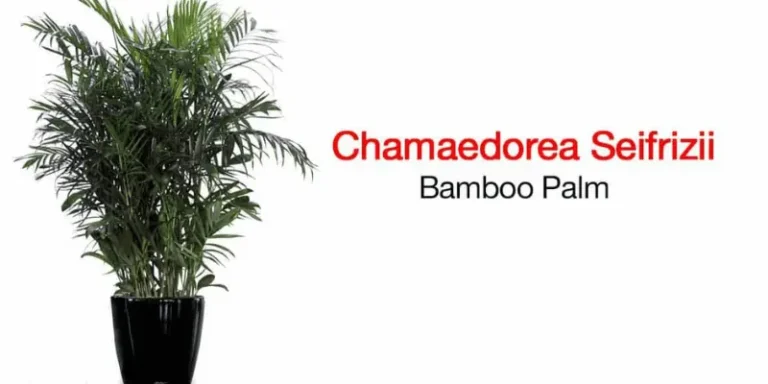Geraniums: How To Grow and Care For Indoor Pelargoniums
Geraniums, scientifically known as Pelargoniums, are a favorite choice for indoor gardening enthusiasts. Their vibrant blooms, fragrant foliage, and versatility make them a popular addition to homes and interiors. If you’re considering growing Pelargoniums indoors, it’s important to choose the right variety that suits your preferences and the conditions in your living space. In this guide, we’ll explore some of the best indoor geranium varieties and their unique characteristics.
Zonal geranium (Pelargonium x hortum)
Zonal geraniums are among the most popular indoor varieties, known for their spectacular shape and vigorous growth. They get their name from specific “zones” or bands of color on their leaves. Here are their main features:
- Leaf color: Zonal geranium leaves come in various shades of green and are decorated with contrasting bands of color, such as red, pink, or white.
- Flower colors: These Pelargoniums produce clusters of large, round flowers in a wide range of colors, including red, pink, orange and white.
- Growth habit: Zonal geraniums are bushy and compact, making them ideal for indoor spaces with limited room.
- Fragrance: Although not as fragrant as some other varieties, they still emit a light, pleasant scent to the touch.
Ivy Geranium (Pelargonium palatum)
Ivy Geraniums are prized for their trailing growth habit, making them perfect for hanging baskets, window boxes and containers. Here are their main features:
- Leaf Shape: Ivy Geraniums have small, lobed leaves that resemble ivy, hence their name.
- Flower colors: They produce profuse, cascading clusters of flowers in a variety of colors including pink, lavender and white.
- Trailing Growth: Their trailing vines can reach up to two feet in length, adding an elegant touch to your indoor spaces.
- Low maintenance: Ivy geraniums are relatively low maintenance and can thrive in mild conditions.
Fragrant Geranium (Pelargonium spp.)
Fragrant geranium is a unique variety known for its fragrant leaves that release a delightful fragrance when touched or cleaned. Here are their main features:
- Fragrant leaves: Each type of fragrant geranium has its own unique scent, from rose and citrus to mint and lemon.
- Leaf Shapes: Leaves come in a variety of shapes, including serrated, deeply lobed, or finely divided, adding visual interest to your indoor garden.
- Flower Variations: While they are grown primarily for their fragrant foliage, fragrant geraniums also produce small, delicate flowers in pink, lavender or white.
Regal or Martha Washington Geranium (Pelargonium domesticum)
Regal Geraniums, also known as Martha Washington Geraniums, are prized for their showy, multi-petalled flowers and unique growth requirements. Here are their main features:
- Flower form: Regal Geraniums produce large, frilly flowers with brilliant color patterns. Petals often have contrasting colors and intricate patterns.
- Special care: They require special care, including cool indoor temperatures and regular pruning, making them a choice for more experienced gardeners.
- Limited Bloom Period: Unlike other geranium varieties, regal geraniums have specific bloom periods, typically in late winter or early spring.
How To Grow Geraniums
Step 1: Choosing the right type of geranium
Before you start growing pelargonium indoors, it’s important to choose the right variety.
Step 2: Planting the geraniums
Now that you’ve chosen your Pelargoniums variety, it’s time to plant them:
Container selection
- Container selection: Choose a pot or container that has good drainage. Make sure it has drainage holes at the bottom to prevent waterlogged roots.
- Soil preparation: Use a well-drained potting mix. You can increase drainage by adding perlite or sand to the mix.
Planting depth - Planting depth: Plant your Pelargonium at the same depth it was in its nursery pot. Make sure the crown (where the stems meet the roots) is slightly above the soil level.
give water - watering: Water the newly planted Pelargoniums well. Then, maintain the moisture level by watering when the top inch of soil feels dry. Avoid overwatering to prevent root rot.
Indoor Geranium Care
To keep your indoor Pelargoniums healthy and thriving, follow these care guidelines.
- Sunlight: Place your Pelargoniums indoors in a location that receives at least 6-8 hours of direct sunlight per day. South or west facing windows are best for providing the necessary light.
- Temperature: Maintain a temperature range of 65-75°F (18-24°C) during the day. Geraniums can tolerate slightly cooler temperatures at night.
- Frequency of watering: Water your indoor Pelargoniums when the top inch of soil feels dry to the touch. Be careful not to overwater, as geraniums are susceptible to root rot. Make sure the pot has adequate drainage.
- Watering technique: Water at the base of the plant, avoiding leaves to prevent fungal problems. Use room temperature water to avoid shocking the roots.
- Fertilizer: Use a balanced, water-soluble fertilizer with a 20-20-20 or 10-10-10 NPK ratio.Feed your Pelargoniums every 4-6 weeks during the growing season (spring to early fall).
- Application: Dilute the fertilizer according to package directions to avoid over fertilizing. Fertilize when the soil is already moist to prevent root burn.
- Pruning and deadheading
Deadheading
- Regularly remove spent flowers by pinching or cutting them off.
- Deadheading encourages continuous bloom and prevents seed formation.
Pruning
- Cut leggy or overgrown branches to promote bushy growth.
- Remove damaged or yellow leaves to maintain plant health.
8. Common insects: Watch for common indoor pests such as aphids and spider mites. If necessary, use insecticidal soap or neem oil to control the infection.
9. Prevention of disease: Ensure good air circulation around the plant to avoid fungal diseases. Avoid overhead watering, as wet leaves can lead to leaf spot diseases.
10. Reporting: Repot indoor Pelargoniums when they outgrow their current container or are rooted. Choose a slightly larger pot with adequate drainage.
11. Clay: Use a well-drained potting mix with good aeration to support healthy root growth.
Winter care
- Reducing water
- During the winter months, reduce the frequency of watering to allow the soil to dry out slightly between waterings.
- Overwatering in winter can cause root problems.
- Pruning for winter
- Before winter, consider pruning one-third of your Pelargoniums to reduce stress during the dormant season.
- Keep the plant in a cool place (about 50-55°F or 10-13°C) to induce dormancy.
- Too cold
- If you prefer, you can keep Pelargoniums indoors over winter by bringing potted plants inside.
- Keep them in a cool, well-lit place with little water.
Benefits of Geranium:
- Colorful Blooms: pelargonium are known for their vibrant and diverse range of flower colors, including red, pink, white and purple. They add color to gardens and indoor spaces.
- Fragrance: Many varieties of Pelargoniums, such as fragrant geraniums, emit a delightful fragrance when touched or brushed, making them a sensory delight in gardens and indoors.
- Air Purification: Indoor geraniums can help improve air quality by absorbing toxins like formaldehyde and benzene, contributing to a healthier indoor environment.
- Insect repellents: Some Pelargoniums varieties, such as citronella geraniums, have natural insect repellent properties. Placing them around outdoor seating areas can help keep mosquitoes at bay.
- Medicinal uses: Some Pelargoniums species have been used in traditional medicine for their potential healing properties, such as treating skin irritations and minor wounds.
- Easy Care: Geraniums are relatively low-maintenance plants, making them suitable for both novice and experienced gardeners.
Decorative Uses of Geranium: - Garden Borders: Pelargoniums are commonly used as colorful border plants in the garden, providing a striking contrast to green plants.
- Hanging Baskets: Ivy geraniums, with their trailing growth habit and profusion of flowers, are perfect for hanging baskets, adding an elegant touch to porches and balconies.
- Container Gardening: Geraniums thrive in containers, making them ideal for decorating patios, decks and entryways with color.
- Window boxes: Planting Pelargoniums in window boxes allows you to enjoy their flowers both indoors and outdoors, adding curb appeal.
- Interior decoration: Pelargoniums can be grown indoors to brighten up living spaces, dining areas, or even bathrooms thanks to their colorful blooms and often fragrant leaves.
- Cut flowers: Pelargoniums flowers make beautiful cut flowers for floral arrangements and bouquets, adding freshness and color to any room.
- Seasonal Displays: Pelargoniums are often used in seasonal displays, such as spring and summer gardens or holiday decorations.
- Table Centerpieces: Place potted Pelargoniums in decorative containers as table centerpieces for special occasions or gatherings.
- Gifts: Potted Pelargoniums make thoughtful and visually appealing gifts for birthdays, housewarmings and other celebrations.
- Topiaries: With careful pruning and training, Pelargoniums can be shaped into topiary forms, adding a unique decorative element to gardens and landscapes.
FAQs (Frequently Asked Questions)
- Can I grow geraniums indoors year-round?
Yes, you can grow geraniums indoors year-round, provided you meet their sunlight and temperature requirements. - How often should I water my indoor geranium?
Water your geranium when the top inch of soil feels dry. Avoid overwatering, as this can lead to root rot. - Do geraniums attract pollinators?
Yes, geraniums attract pollinators like bees and butterflies with their colorful flowers. - Can I propagate geraniums from cuttings?
Yes, geraniums can be easily propagated from stem cuttings. It’s a cost-effective way to grow your collection. - When is the best time to repot geraniums?
The best time to repot geraniums is in the spring when they are actively growing. Choose a slightly larger pot to accommodate their growth



